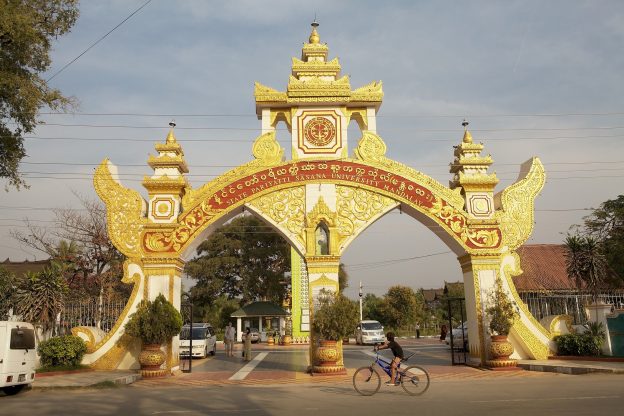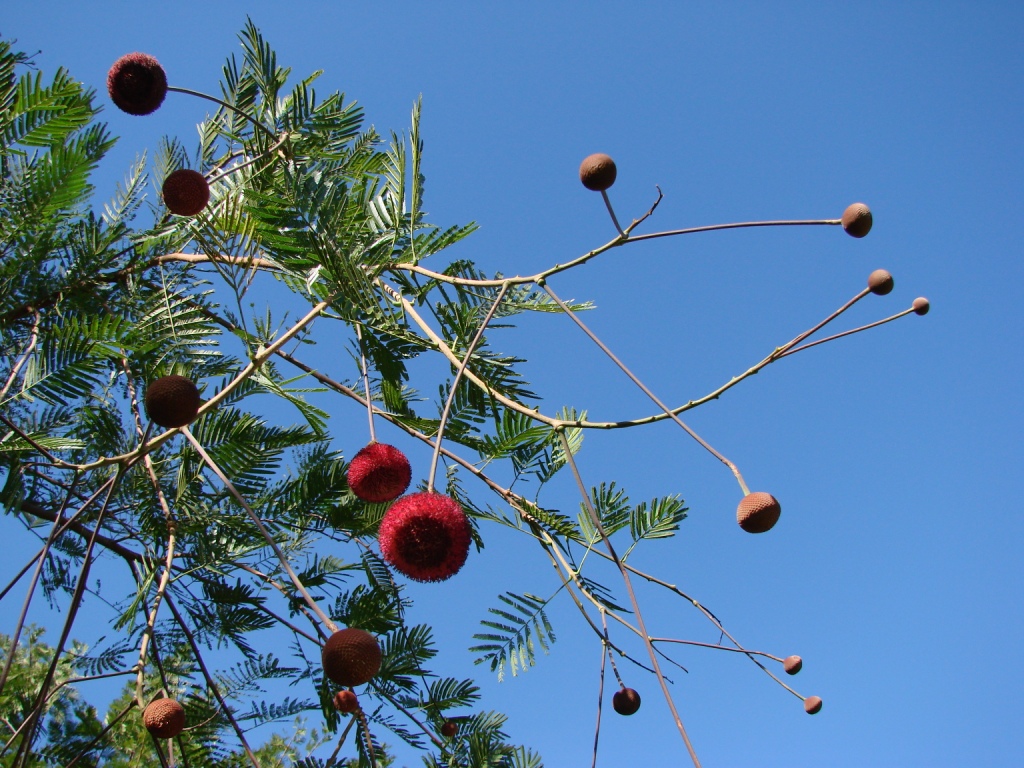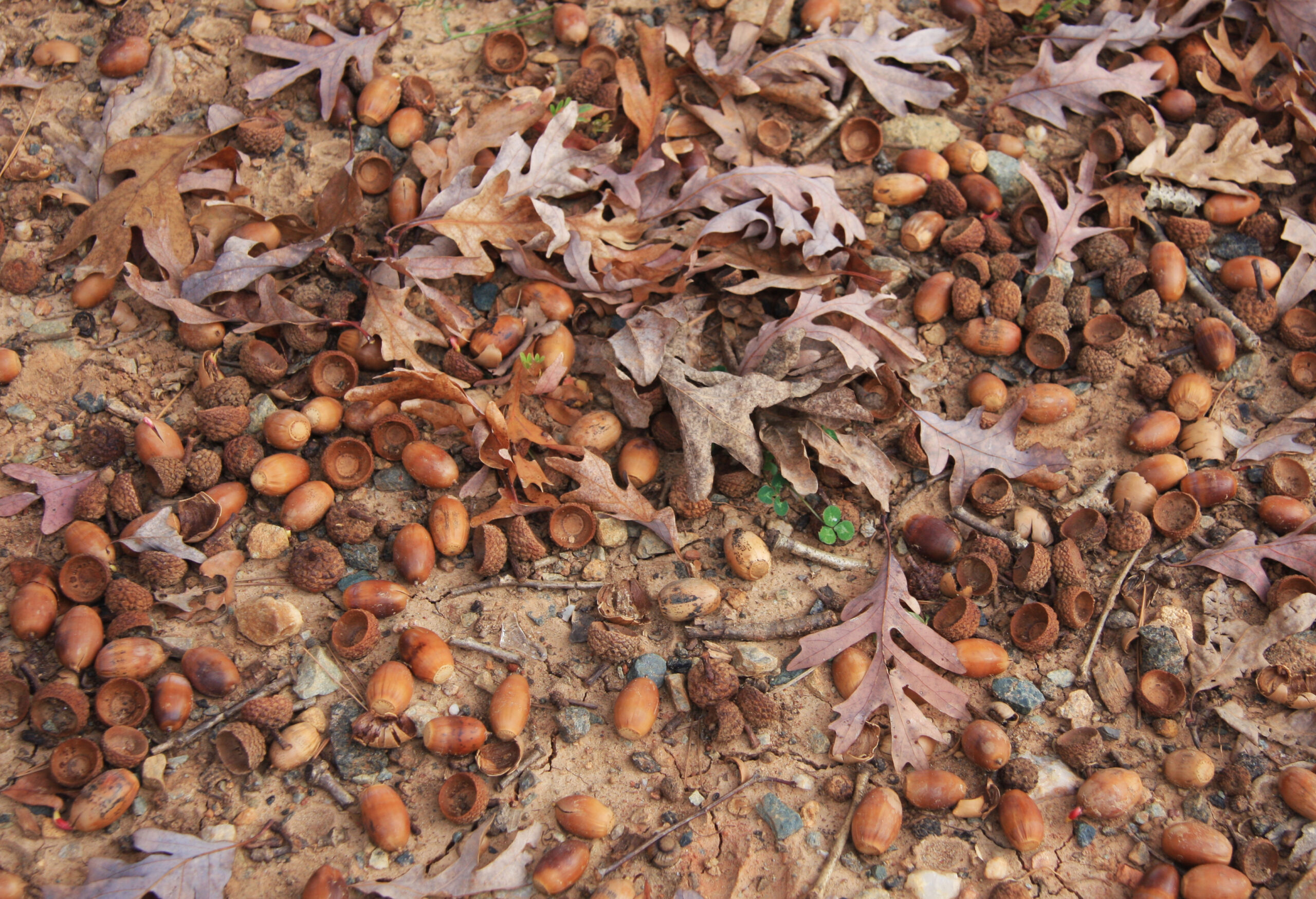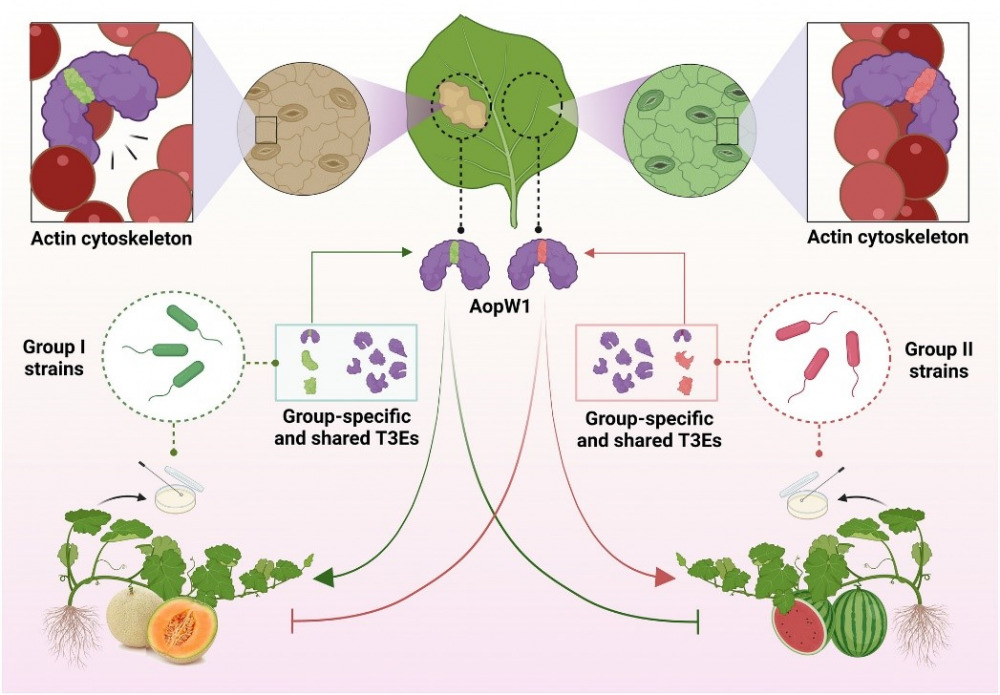The Myanmar’s military coup, however, marked the beginning of an unprecedented period of turmoil that would drastically alter my life and the lives of countless others in academia. As a member of the country’s higher education community, I have since witnessed firsthand the importance of democracy not just as a political system, but as the very foundation of intellectual freedom and academic progress. This belief is what drove me to take part in the Civil Disobedience Movement (CDM). I understood that a thriving democracy fosters critical thinking, encourages diverse perspectives, and nurtures innovation—all essential elements for quality education and research. Read the complete article at its original source, The Diplomat, by clicking here.
Potential Anticancer Properties of Stink Bean
Stink bean, particularly, Parkia speciosa, (for readers interested in the article on Parkia insignis in a local language, please click here.) has gained attention in recent years for its potential anticancer properties, health benefits, particularly in cancer prevention and treatment. While it is a popular culinary ingredient in Southeast Asia, its medicinal properties are now being explored, with early research indicating its potential anticancer effects. Overview of Stink Bean (Parkia speciosa) Stink bean, often referred to as “petai” in local languages, is a leguminous tree native to Southeast Asia. The beans are known for their strong odor, which can be off-putting to some, but they are a staple in many traditional dishes. Beyond its culinary uses, stink bean has been traditionally used in folk medicine for various ailments, including hypertension and diabetes. Recent scientific investigations have begun to explore its potential in cancer prevention and treatment. Antitumor and Antimutagenic Properties Preliminary Studies and Findings Emerging research has shown that stink bean may possess antitumor and antimutagenic properties, making it a candidate for cancer prevention and treatment. Antimutagenic Activity in the Ames Test One of the initial studies on stink bean focused on its antimutagenic activity using the Ames test, a widely recognized method for detecting chemical mutagenicity. The methanolic extract of stink bean seeds demonstrated moderate antimutagenic activity, suggesting its potential to reduce the occurrence of mutations that could lead to cancer [2]. Association with Esophageal Cancer Reduction In Southern Thailand, where the consumption of raw stink bean seeds is common, epidemiological studies have observed a lower incidence of esophageal cancer. While this correlation does not establish causation, it has prompted further research into the potential protective effects of stink bean against certain types of cancer [2]. Cytotoxicity Against Cancer Cell Lines Another significant finding is the selective cytotoxicity of stink bean seed coat extracts against specific cancer cell lines. Studies have shown that these extracts exhibit cytotoxic effects on breast, colon, and liver cancer cells, indicating that stink bean may have the potential to target and kill cancer cells selectively without harming normal cells [2]. Bioactive Compounds in Stink Bean The anticancer properties of stink bean are believed to be due to its rich content of bioactive compounds. These compounds may work synergistically to inhibit cancer cell growth and promote overall health. Thiazolidine-4-Carboxylic Acid One of the key compounds found in stink bean is thiazolidine-4-carboxylic acid, which has been reported to possess anticancer properties. This compound may inhibit the growth of cancer cells and reduce the risk of tumor formation [2]. Phenolic Acids and Flavonoids Stink bean seeds and pods are rich in phenolic acids and flavonoids, which are known for their antioxidant and anti-inflammatory properties. These compounds may help protect against the development of cancer by neutralizing harmful free radicals and reducing oxidative stress [2]. Lectins and Immune Response Enhancement Lectins, another group of compounds found in stink bean, have been shown to increase lymphocyte mitogenesis, which could potentially enhance the body’s immune response against tumors. By boosting the immune system, stink bean may help the body better recognize and fight cancer cells [2]. Antioxidant Activity and Cancer Prevention Role of Antioxidants in Cancer Prevention Antioxidants play a crucial role in protecting cells from damage caused by free radicals, which can lead to cancer. Stink bean’s high antioxidant activity may contribute to its potential as a cancer-preventive agent. Polyphenols, Phytosterols, and Flavonoids Extracts from stink bean’s empty pods and seeds are rich in polyphenols, phytosterols, and flavonoids, all of which have been linked to reduced cancer risk. These compounds work together to neutralize free radicals and lower oxidative stress, thereby reducing the likelihood of cancer development [5]. The Need for Further Research While the findings on stink bean’s anticancer properties are promising, more research is needed to fully understand its potential and efficacy. Current Research Limitations Most of the studies conducted so far have used crude extracts of stink bean, rather than isolated compounds. This makes it difficult to determine which specific components are responsible for the observed anticancer effects. Additionally, much of the research has been done in vitro or in animal models, so the results may not fully translate to humans [2]. Future Directions for Clinical Trials To establish stink bean as a viable option for cancer prevention or treatment, clinical trials involving human participants are essential. These trials would help determine the safety, dosage, and effectiveness of stink bean and its bioactive compounds in preventing or treating cancer. Conclusion In conclusion, stink bean (Parkia speciosa) shows promising potential as an anticancer agent, thanks to its antitumor and antimutagenic properties, bioactive compounds, and antioxidant activity. However, while the early findings are encouraging, much more research is needed to confirm its efficacy and safety in humans. As it stands, stink bean’s potential in cancer prevention and treatment remains preliminary, and future studies will be critical in determining its role in this area. FAQs 1. What are the main bioactive compounds in stink bean? The main bioactive compounds in stink bean include thiazolidine-4-carboxylic acid, phenolic acids, flavonoids, and lectins, all of which may contribute to its potential anticancer properties. 2. How does stink bean’s antioxidant activity help in cancer prevention? Stink bean’s antioxidant activity helps neutralize free radicals, reducing oxidative stress and potentially lowering the risk of cancer development. 3. Are there any clinical trials on stink bean’s anticancer properties? As of now, most studies on stink bean’s anticancer properties have been conducted in vitro or in animal models. Clinical trials involving human participants are still needed. 4. Can stink bean be used as a standalone treatment for cancer? Currently, stink bean is not recommended as a standalone treatment for cancer. More research is needed to establish its efficacy.
A Uih Zahin A Hoih: Zawngtah
Hih ‘A Uih Zahin A Hoih: Zawngtah’ cih thului pen ‘Cidamna Ding Sungkung Manpha Pawlkhat’ cih laibu sung pan a kila ahi hi. Tua laibu sungah a kigelh singkung manphatna thute pen, scientific findings a kici mipilte in kancianna (research) abawlna tung tawnin a kimu khia thute siksanin a kigelh ahi hi. ANUNG THU 2016 kum WHO[1] te’ report gelhna sungah, leitungah misi 70% pen sikhum leh zunkhum hang hi, cizen hi. Hizah aa, mi tampi-in asih lawh natna ahi, sikum leh zunkhum natna pen Zawngtah in zo mahmah cih mipilte in mu khia khinta uh hi. (If you want to read about this article in English, please click here). Zawngtah pen Australia gam ah kimu masa in tua hunlai-in, sih theihna ding alauhuai singkung khat hi, ci-in ciamteh uh hi. Thamlo in, nung deuh mahmah, 2020 kum a kibawl CARA[2] 2020 Khawmpi (conference) na ngawn ah a sialin ne lehang natna hong pia thei singkungte lak ah khatin ciamteh lai uh hi. A tua cih theihna ding thukhat ah, Zawngtah hawng sungah a om djenkolic[3] akici amino acid[4] nam khat pen guu (toxic) ahi hi. Hih in zun paina leh kal (kidney) sia sak thei hi. Tua-ahih manin, ahawng kiat sianglo aa ih neekloh zenzen pen, a kipil mahmah hi gige hi. Thamlo in, amu pua lam ah cyclic polysulfides[5] a kici dat nam khat zong kihel aa, tuate zong guu mah hi-in, ahi zongin, tui sungah diah lehang, tua guu ii a thahatna bei pah lel citciat hi. Tua ahih manin, Zawngtah ih bawl ding ciangin tui sungah ih diah tangtang zong, a hoih mahmah khat nahi gige hi. Zawngtah pen Australia gam panin New Zealand, California, Africa leh Asia gam dongah kizelh hi. Australia pen Zawngtah pianna (origin) ci-in kikipsak aa, ahi zongin Zawngtah tam a om penpen na leh ane mi tam a om penpen-na mun leuleu pen Southeast Asia (Asia gam sung nisuahna khanglam) hi-in, adiakin India, Kawlgam, Thailand, Indonesia, leh Malaysia te ahi hi. Thamlo in, mipil pawl khatin, Asia gam sung pen Zawngtah om cilna mun hizaw dinga, ahi zongin, pilna lamah Asiate ziakai ahih manin, a thei khalo uh hi ding hi, ci uh hi. Zawngtah pen mikaangte in ‘stink bean’ ci uh aa-ahi zongin leitungah ‘petai’ ci-in a thei mi tam penpen hi. Petai cih pen min hoih leh a zaknop kammal hilo in, ‘kalkawm’ ahih kei leh ‘uih lel ciai’ cihnopna lam ah a kizang kammal ahi hi. Zawngtah sungah methane gas tuamtuam leh sulfur dat tuamtuam tampi a om huhau in, uih vengvung ahih manin ‘petai’ a kici, apai suak hi ding hi, kici hi. Hih ‘petai’ cih kammal pen Indonesia pan akipan hizaw ding maw Malaysia pan hizaw ding cih, tudong a kicianin kipsakna om nailo hi. Kawlte in Myauk-ngo ci-in sam uh aa, Zawngtah agah leh ahiang kizopna khauhlua mahmah ahih manin zawngte na ngawnin duh mahmah napi uh, lo zolo in kap uh hi, tua hangin Myauk-ngo akici hi, ci uh hi. Zogam, Manipur leh Mizo gamte in Zawngṭah (Zongtrah) ih ci hi. AMANPHATNA Zawngtah pen Limsing mah bangin sikhang kiamsak thei baan ah, zunkhum, leh sikhum natna neite a dingin zongh hoih mahmah hi. Tanglai-in, sikhang leh zunkhum natna neite a ding zatui omlo ahih manin, Peninsular Malaysia bangah tua natna-aneite a ding Zawngtah gah leh amu, amawkna in hawmliang ngei uh hi. Tu dongciang mah sikhang leh zunkhum natna-a damna dingin mang zatui (western drug) sangin, hoih zawlai hi, ci-in, kancianna (research) tungtawnin, mipil Baynes ahi aa, Ramesh leh alawmte in ahi zongin gen lai uh hi. Tanglai-in phaknatna aneite zong Zawngtah tawh kibawl leh dam kici aa, siklik (wart) zong Zawngtah in beisak thei hi. Thamlo in, lungsim gikin lunggimna natna (depression), PMS[6], sitawm thabei (anemia), sung/ek khak (constipation), thau-lua (overweight), leh meima (ulcers) tuamtuamte adamna dingin Zawngtah in huh thei hi. Zawngtah sungah a om datte a kisittel tak ciangin antioxidant tawh kisai dat tampitak a sungah a om lam kimu aa, phenolics,[7] flavonoids, alkaloids,[8] leh terpenoids[9] cihte tampi tak om ahih manin hih atungah ih gente’ sangin zong cidamna dingin ahoih zaw tampi hong pia theilai dingin ki um ahih manin, aki kankhia khinzo nailo hizaw hi, ci-in mipilte in gen uh hi. Zawngtah mu sungah a kihel dat tampite sung panin, carbohydrates (68.3–68.7%), proteins (6–27.5%), thauna (fats) (1.6–13.3%), fibers (1.7–2.0%), leh minerals (0.5–0.8%) cih bangin kihel hi. Thamlo in minerals tawh gen ding hile hang, Zawngtah mu agikna 100 g ciangin calcium (108–265.1 mg), magnesium (29 mg), potassium (341 mg), phosphorous (115 mg), iron (2.2–2.7 mg), vitamin C (19.3 mg), vitamin E (4.15 mg) cih bangin kihel aa, cidamna dingin zatui sai ah ih lei zatui pawlkhat-te sungah a kihel mineralte’ sangin tam kihel thei zawlai cih kimu thei hi. ZAHPAH THEIHDING PAWLKHAT 1. Guh leh ha cidamna Zawngtah 100 g sungah phosphorus (mineral namkhat) 115 mg kihelin, tua pen nisim neek ding ahoih bek (RDI)[10] zah ii 14% bang hipah hi. Hih phosphorus pen guh leh ha-a cidamna dingin a kisam mahmah khat ahi hi. Adiakin phosphorus in guh khauhlo in a kitan baih natna (osteoporosis) dal aa, pumpi sunga cell[11] te zong cidamsak hi. Tua-ahih manin, guh leh ha cidamna dingin Zawngtah manmanin nek huai hi. 2. Khuak Zawngtah 100 g sungah potassium 341 mg kihelin, tua pen nisim neek ding ahoih bek zah ii 12% ahi hi. Hih potassium in khuak sung nasepnate lemtuah ahih manin, khuak sung cidamna dingin Zawngtah nek huai mahmah hi. 3. Naupaaite Naupaaite pen naupaailote sangin iron (taan-dat) azah nih in kisam zaw hi. A diakdiakin anaupai kipat, kaal khat panin kaal sawm leh nih sung kisam phadeuh hi. Ahang pen a sunga om nau acidamna ding leh akhan na ding ahi hi. Zawngtah 100 g sungah iron 2.7 mg kihel aa, tua pen nisim nek ding a-ahoih bek zah ii 15% bang ahi hi. Tua-ahih manin numei naupaaite in, sahawk, lingmaw, tamfaza, cihte tawh helin Zawngtah ne zelzel leh, ahoih mahmah ding ahi hi. 4. Thau kisa lua maw? Thau akisa
Ahawng Bek Zong Amanpha: Limsing
Hih ‘Ahawng Bek Zong Amanpha: Limsing’ cih thului pen ‘Cidamna Ding Sungkung Manpha Pawlkhat’ cih laibu sung pan a kila ahi hi. Tua laibu sungah a kigelh singkung manphatna thute pen, scientific findings a kici mipilte in kancianna (research) abawlna tung tawnin a kimu khia thute siksanin a kigelh ahi hi. ANUNG THU Mun tuamtuam ah Limsing na om kawikawi ding ahih sam hangin, ahuampi-in, leitung galpi khatna (World War I) huhau in singkung abei mangte sungah Limsing zong khatin kihel ci-in kiciamteh hi. Tua-ahih manin, galpi aven khit ciangin, amunmun panin amu ki kaaikhawm kik-kikin, a kisuan kik-kik hi aa, a taktakin Limsing bang hunin leitung ah om khin cih mipilte’ kankik na-ah ahih leh, tuma kum 300000 hun lai pekin Northern Hemisphere[1] kuam tengah om khin hi, cih ciangin kithei-in, tua mun pen Limsingte’ omsak penna mun hi ci-in, kiciamteh hi. Tua Northern Hemisphere a kici mun pen zaipitak ahih dung zui-in, England te leh USA te in Limsingkung pen ko gam ah om masa hi, ciciat nuam uh hi. England te in kamzat tangzang khat nei uh aa, “England was built on Oak” ci uh hi. Acihnopna pen England pen Limsing tungah kilam hi, cihna-ahi hi. Tua-acih zah khatun, a tangthu-uh sim lehang, biakna, ngeina, leh khantohnate Limsing tawh tonkhawm uh ahih lam kimu thei aa, Limsing tawh kisai tangthute lak ah zong a lunglut huai pente ahi hi. Tanglai-in Rome leh Viking[2] te ado Britain[3] te in, Limsing pen Jupiter[4] leh Thor[5] tawh kizopna nei ahih manin vanglian hi, ci-in um uh aa, gualzawhna-angah ding uh a deihna in, Limsingteh tawh kituam kawmsa in galdo uh hi. Thamlo in Limsing pen singkung dangte sangin keekin deng nuam zaw hamtang thei hi. Tua pen Britian te in, khuavaak pen pasian nam khat hi aa, tua pasian leh Limsingte ki naak zop phadeuh ahih man ahi hi, ci uh hi. Limsing tungah a lomlom a-a om thei lopate (mistletoe) pen tanglai Druidry[6] ngeina bulphuh in cinate a kibawlna-ah kizangh aa, nau nei theilote in tua mistletoe te nam le uh nau nei thei hi, ci-in ki um hi. Thamlo in, Britain te in tanglai-in, Limsing pen leitangh ii thupha naak khat hi, ci-in um uh hi. Tua-ahih manin phalbi sung Solstice[7] leh Yule[8] hun a tun simin Limsingte mei-in tuah uh aa, Limsing tungah a om lopa bawkte tawh a innte uh zeem uh hi. Tu mahmah in zong et theih dingin a om lai, Somerset[9] ah a om Glastonbury Tor[10]a kici inn sangpi pen a kilamna-abul ah Limsing kung a ham-taak nih kizangin, ki ding khawm sak hi (A nuai ah tua ‘Glastonbury Tor’ a lim kong suaksak hi). Tuate nih pen Gog leh Magog kici aa, Lodon a keem pasiante cihnopna-ahi hi. Tua Gog le Magog pen Thor tawh kizomin vanglian mahmah hi, ci-in um uh hi. Limsingteh pen tanglai-in Britain te in, galkap sungah gal ki donna pan gualzawhna-angahte pahtawina-apiak uh ciangin zangh uh hi. Thamlo in, galkap zakangte zong Limsingteh ahih keileh Limsingteh tawh ki bangin a kibawl, lim khat peuhpeuh tawh pahtawi uh hi. Hih ngeina pen 1914 nung siah tam zat nawnlo uh hi, kici hi. 22nd Cheshire Regiment[11] a kici galkapte in gualzawhna khat peuhpeuh angah uh ciangin Limsingteh silh uh hi. 1743 kum lai bangh, King George II[12] galte in a sukkhak loh ding deihna tawh, a inn Limsingteh tawh kizeem sak hi. Tanglai-in, Rome galkapte leuleu in, galsung pan a mite’ khat peuh ii nuntakna ahu khia zo galkap khat peuh a om hun ciang, Limsingteh tawh a kibawl kham lukhu lim khusakin pahtawi uh hi. Tua pen ‘civic oak’ ci uh aa, minam leh gam mite a ding na kipiakna leh na hangsanna kong ciamteh uh hi, cinopna hi, ci uh hi. Tanglai-in Limsing tawh a kibawl Queen Elizabeth gunkuang ci-in a minthang vangvang khat om ngei aa, 1991 dong kizangh thei hi. 1651 kum aa, Worcester[13] gal kido na-ah Charles II[14] in gal a lelh ciangin, tai vingvengin Limsing kawm ah kibu in suakta hi. 1660 kum, May 29 ciangin, tua Limsingin anuntakna hon khia ci-in a lungdamna in, Royal Oak Day[15] cih phuankhia hi. 1743 kum, Dettingen[16] gal kidona leuleu ah King George II a sakol kilok gawpin, tai mang hi. A cihna ding theilo ahih manin, a sakol tungpan leengkhia-in Limsing kawm ah kibu hi. Cheshire Regiment galkap khatin na huh in, na seel hi. Gal a ven ciangin a lungdamkohna in, Limsing hiang khat King George II in tua galkap pa pia hi. Tua daan pahtawina pen tu dongin a tuampian khat ciaptehna pahtawina tepawl ah ki zangh lai hi. Limsing pen hih a tunga daanin, a vanglian leh a belhtaak cing cihnopna tawh akisai tangthu tuamtuamte tawh na kizom aa, tua dung zui mah in, amin zong Mikang pau in ‘oak’ a kici ahi hi. Oak cih ciangin ‘thahat ding’ ahih keileh ‘vanglian ding’ cihnopna hi, ci uh hi. Tua zah khatin Limsing pen tanglai-in, England bek hilo, Poland, Portugal, Germany, leh Greek te in zongh a vanglian, thahatna leh pilna-anei, singkung khat hi ci-in um uh aa, pasian khat zah in ngaihsun uh hi. Lai Siangtho sungah zongh Limsing pen ‘tawsaw’ cih min tawh tam veipi kigelh in, bukna leh teenna (Pian. 13:18), gualzawhna leh thuakzawhna (Pian. 35:4), thahatna leh vangliatna (Amos. 2:9), cihte tawh kisai ah akizatna kimu thei hi. Mi tampitak in, Topa Zeisu kikhaina sing lamteh na ngawn, Limsing hi, ci uh hi. Thamlo in, England, Poland, Portugal, Germany, leh Greek gamte a gam lapi (national anthem) uh sungah Limsing kung etsakna kammal a kihel vive hi, kici hi. 2001 kumin gam ciaptehna sing (National Tree) dingin USA ah singkung nam 20 sung pan mee (vote) tawh teelna kha 4 sung vingveng aneih khit uh ciangin Limsing pen gam ciaptehna sing (National Tree) dingin teel uh aa, congress ah 2004 kumin kipsak hi. AMANPHATNA Limsing pen tui a khol zo penpen, huih siangtho tam a khahkhia zo penpen, leh azu ava in omna dingin nuam asak pen singkungte lak
Ezekiel’ gen Gog leh Magog
Ezekiel gen Gog leh Magog thu tawh kisai, gimna hong tungtungta ahitam?
Critical Insights into Bacterial Fruit Blotch and Its Impact on Melon and Watermelon Crop Health: A New Findings from The Burdman Team
Our new findings from the Burdman lab were featured in the Hebrew University and Jerusalem Post. Researchers: Irene Jiménez-Guerrero, Monica Sonawane, Noam Eckshtain-Levi, Za Khai Tuang, Gustavo Mateus da Silva, Francisco Pérez-Montaño, Meirav Leibman-Markus, Rupali Gupta, Lianet Noda-Garcia, Maya Bar, Saul Burdman; In this work, we focused on the effector AopW1, revealing its role in host adaptation and providing new insights into the HopW1 family of bacterial effectors, with the abstract of this paper accessible here. Acidovorax citrulli, the bacterium that causing disease to melon and watermelon, has two major genetic groups with different host preferences. Group I strains are more associated with melons, while Group II strains are more aggressive towards watermelons. We discovered that these groups differ in their arsenal of type-III secreted protein effectors, which are crucial in manipulating host metabolism to promote disease. Our study sheds light on how these effectors, particularly AopW1, contribute to the pathogen’s virulence and host preference. This knowledge is vital for developing strategies to combat bacterial fruit blotch and protect melon and watermelon crops.




